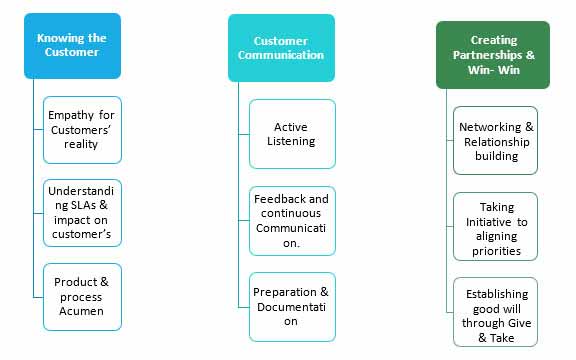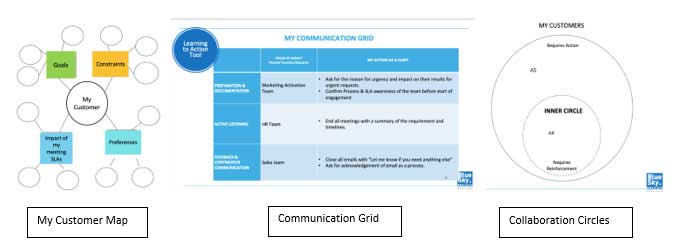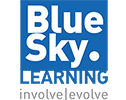
- February 1, 2021
- bluesky
- 0 Comments
- Behavioral Skills, Virtual Learning
The Human element in customer centricity
Customer centricity took centre stage in January with a couple of interesting projects for 2 completely different industries. Putting the customer at the centre of all action should be a no-brainer for any organization in any business, and yet, every day we are all subjected to mediocre customer experiences.
This goes to show that beyond robust SOPs, it’s the human element that determines good customer experiences. It’s a service orientation that has to permeate the very culture of the organization. And it’s not just about the external customer but also about how one treats their internal customers.
Internal customer centricity is often ignored compared to end customer focus. Ironically, internal customer focus actually greatly influences an organization’s ability to serve the end customer owing to the inherent interdependencies that exist.
So when we got into a conversation with the senior leadership of the shared services group at Jubilant Life Sciences, we knew exactly where they were coming from. Their intent for creating a culture of internal customer service orientation and involvement to help curate a focused learning journey deserves to be lauded.
From all the inputs received we identified 3 key pillars to the program, beginning with a deeper understanding of the internal customer and their realities. Here is how the 3 pillars and the focus areas stacked up:
This goes to show that beyond robust SOPs, it’s the human element that determines good customer experiences. It’s a service orientation that has to permeate the very culture of the organization. And it’s not just about the external customer but also about how one treats their internal customers.
Internal customer centricity is often ignored compared to end customer focus. Ironically, internal customer focus actually greatly influences an organization’s ability to serve the end customer owing to the inherent interdependencies that exist.
So when we got into a conversation with the senior leadership of the shared services group at Jubilant Life Sciences, we knew exactly where they were coming from. Their intent for creating a culture of internal customer service orientation and involvement to help curate a focused learning journey deserves to be lauded.
From all the inputs received we identified 3 key pillars to the program, beginning with a deeper understanding of the internal customer and their realities. Here is how the 3 pillars and the focus areas stacked up:
SCOPE

DESIGN
We wanted to create a deeper awareness and acceptance within the group of their inherent tendencies, preferences and biases w.r.t to their internal customers before we could move onto the desired behaviours & best practices.
We were conscious of making the program contextual for the participants by moving from generic to specifics so it enables them to move from learning to action.
The design was rooted in the experiential learning methodology making it interactive, engaging, no-nonsense and action-oriented while also being a fun experience.
We were conscious of making the program contextual for the participants by moving from generic to specifics so it enables them to move from learning to action.
The design was rooted in the experiential learning methodology making it interactive, engaging, no-nonsense and action-oriented while also being a fun experience.

Activities & Experiences:
All the experiential tools used were created specifically for the virtual environment.
The success that the participants experienced in these activities were relative to the empathy that they demonstrated to the person(s) on the other side and how much they wanted a solution for them.
The focus of the guided discussion then shifted to how those on the other side represented their customers and how their actions represented how they may be approaching their customers today.
The subtleties and nuances of owning the bigger picture and creating a collaborative working style with the internal stakeholders are the Big Elephants in the room as far as internal customer orientation is concerned. The inherent dysfunctionalities in the way one deals with them today were beautifully brought to the fore using one of our favourite activities called THE MATRIX – So much so that the Head of the team specifically called out the experience during his closing.
Activities used:
Deeper understanding of the customer – THE VALUE CONTINUUM
Communicating with the Customer – THE FACE OFF
Collaboration & Win-Win Partnerships – THE MATRIX
FROM LEARNING TO APPLICATION
How does all this relate to the team’s specific context and their predicaments? And how does one see all these best practices play out in real-life situations? This is one of the key issues we have come to address in all our learning interventions, else behavioural learning programs remain in the generic space and fade away.
THE COMIC STRIP activity built around a curated tough internal customer scenario was the highlight of the program where participants were asked to provide a solution in the form of a comic strip where they were provided templates to create it.
In the construction and presentation of the solution, they were meant to apply all that they had learnt in a real-life situation. Social learning and peer interaction made the experience richer and more impactful.
FROM APPLICATION TO RITUALS & HABITS
Awareness and acceptance is only the first step. The real challenge is to move from awareness to action. Demonstrating customer-centricity can mean different things to different members of the team.
Every module ends with simple tools that help the participants articulate habits and rituals that will capture how they intend to put their learning into practice to positively impact their KRAs.
With accountability partners and frequency of check-ins all captured and committed to, the team sets the foundation for creating a culture of internal customer-centricity.
All the experiential tools used were created specifically for the virtual environment.
The success that the participants experienced in these activities were relative to the empathy that they demonstrated to the person(s) on the other side and how much they wanted a solution for them.
The focus of the guided discussion then shifted to how those on the other side represented their customers and how their actions represented how they may be approaching their customers today.
The subtleties and nuances of owning the bigger picture and creating a collaborative working style with the internal stakeholders are the Big Elephants in the room as far as internal customer orientation is concerned. The inherent dysfunctionalities in the way one deals with them today were beautifully brought to the fore using one of our favourite activities called THE MATRIX – So much so that the Head of the team specifically called out the experience during his closing.
Activities used:
Deeper understanding of the customer – THE VALUE CONTINUUM
Communicating with the Customer – THE FACE OFF
Collaboration & Win-Win Partnerships – THE MATRIX
FROM LEARNING TO APPLICATION
How does all this relate to the team’s specific context and their predicaments? And how does one see all these best practices play out in real-life situations? This is one of the key issues we have come to address in all our learning interventions, else behavioural learning programs remain in the generic space and fade away.
THE COMIC STRIP activity built around a curated tough internal customer scenario was the highlight of the program where participants were asked to provide a solution in the form of a comic strip where they were provided templates to create it.
In the construction and presentation of the solution, they were meant to apply all that they had learnt in a real-life situation. Social learning and peer interaction made the experience richer and more impactful.
FROM APPLICATION TO RITUALS & HABITS
Awareness and acceptance is only the first step. The real challenge is to move from awareness to action. Demonstrating customer-centricity can mean different things to different members of the team.
Every module ends with simple tools that help the participants articulate habits and rituals that will capture how they intend to put their learning into practice to positively impact their KRAs.
With accountability partners and frequency of check-ins all captured and committed to, the team sets the foundation for creating a culture of internal customer-centricity.

With an experiential, activity-based module, we were able to set the participants up for success. The activities act as a mirror for the participants to help notice where they stand today. They then can use these reflections to actively create action plans to improve and move forward. Not only did they learn the ‘what’ of customer-centricity but the ‘how’ and committed to simple actionable steps that they could immediately start implementing.
